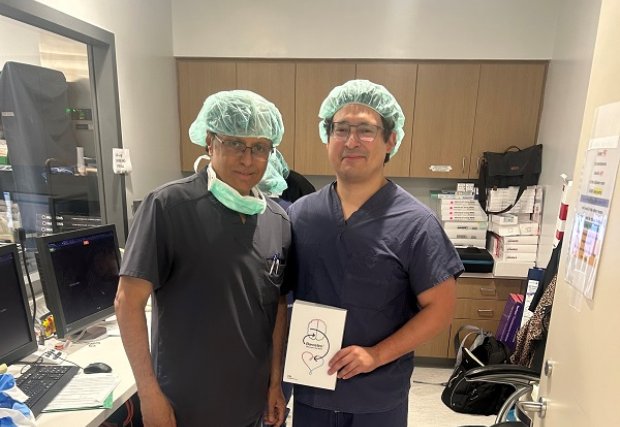Northwest Texas Healthcare System Heart and Vascular Center First in Amarillo to Implant Device to Treat Symptoms of Heart Failure

Northwest Texas Healthcare System Heart and Vascular Center announced the hospital's first successful implant of the Barostim™ Baroreflex Activation Therapy, the world’s first FDA approved heart failure device to use neuromodulation – the power of the brain and nervous system – to improve the symptoms of patients with systolic heart failure. This therapy was designed to treat heart failure patients who may not be receiving adequate symptom relief from medications alone.
Cardiac Care at NWTHS
To learn more about the Heart and Vascular Center at Northwest Texas Healthcare System, visit our services page.
Unlike other heart failure device therapies, Barostim contains no hardware in the heart or vasculature. It works by electrically stimulating baroreceptors – natural sensors located in the wall of the carotid artery – that tell the nervous system how to regulate heart, kidney and vascular function. These effects reduce the heart’s workload and help it pump more efficiently, helping to restore balance to the autonomic nervous system and improve the symptoms of heart failure. Barostim plus heart failure medications has been shown to improve exercise capacity, quality of life and NYHA class, helping patients return to their daily activities.1
Heart failure is a chronic, progressive condition in which the heart muscle is unable to pump enough blood to meet the body’s needs for blood and oxygen. Essentially, the heart can’t keep up with its workload. People with heart failure often experience shortness of breath, fatigue, swelling in lower extremities, weakness, and the reduced ability to perform physical activity. In the US, heart failure is estimated to affect 6.9 million adults and is expected to increase by 24% to nearly 8.5 million by 2030.2 Overall, heart failure is associated with a four-fold increased risk of death and a six to nine times increased risk of sudden cardiac death.
1. Zile MR, et al. J Am Coll Cardiol 2020; 76:1-13
2. Ponikowski P, Anker SD, AlHabib KF, et al. Heart failure: preventing disease and death worldwide. ESC Heart Fail. 2014;1(1):4-25.
